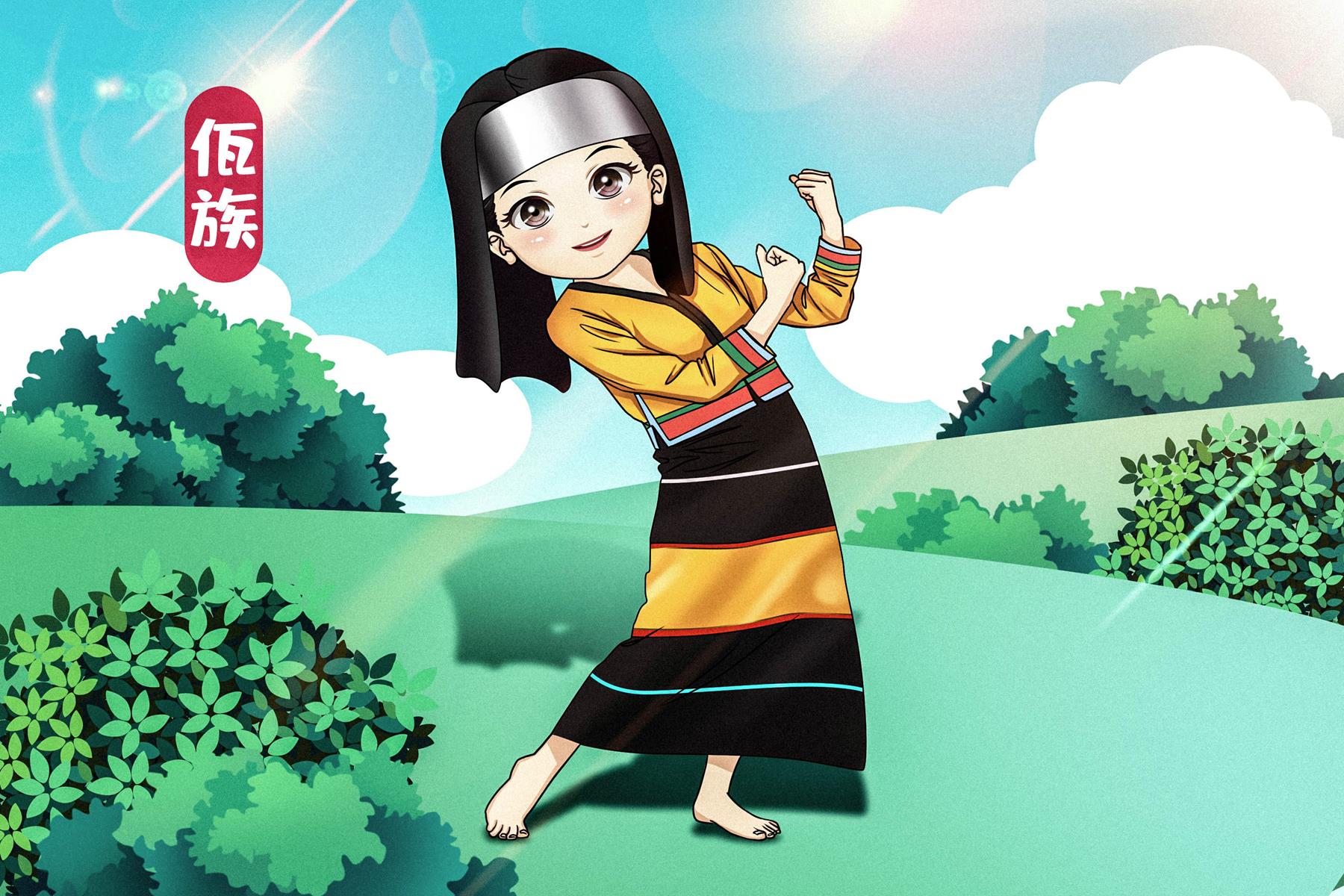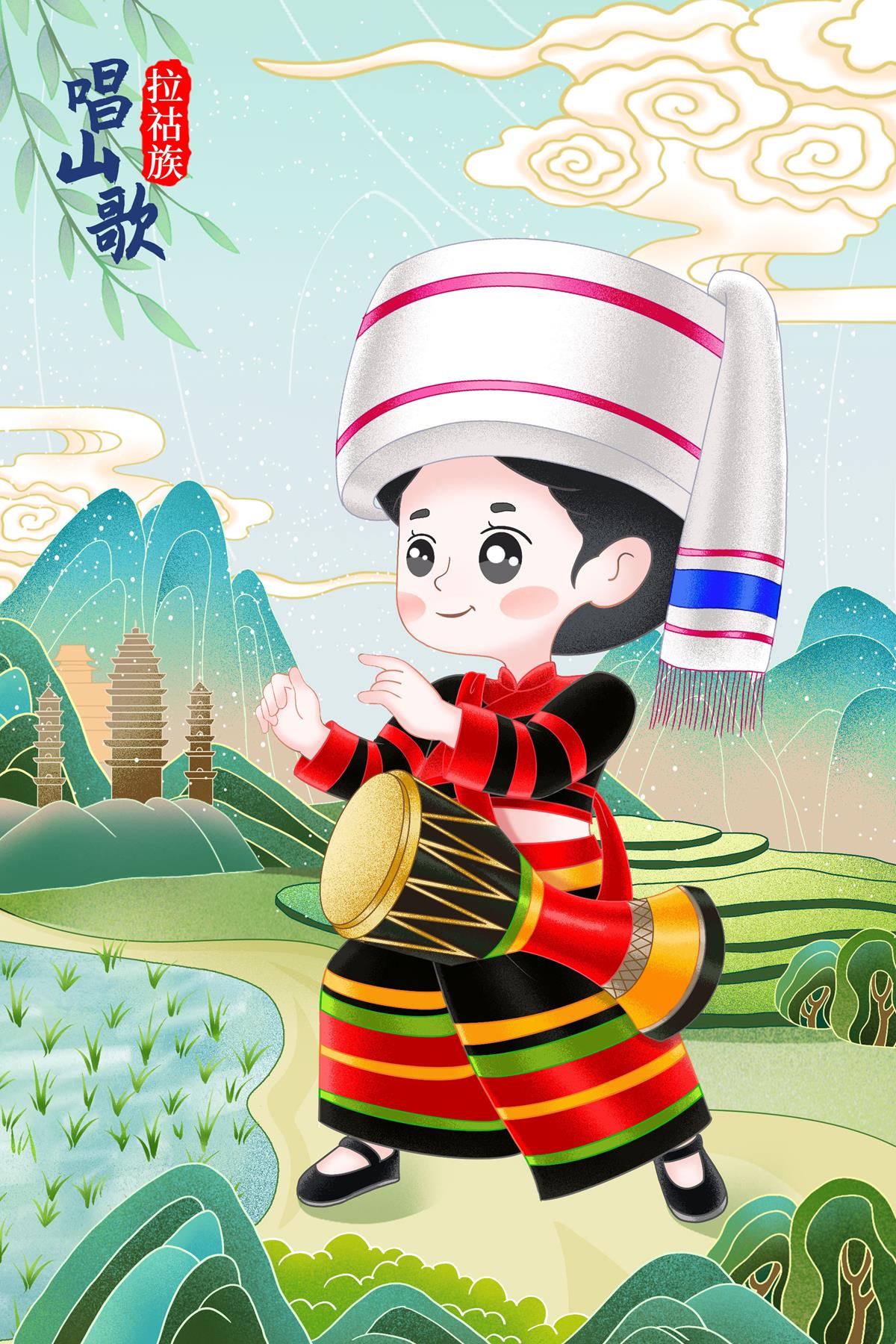Year-Round Festivals in Pu'er


- Lahu's Kuzha Festival (the Spring Festival)
Dates: from the 30th day of the 12th lunar month to the fourth day of the first lunar month (New Year holidays); and the 15th day of the first lunar month (Lantern Festival).
Location: Lancang
Lahu people have the two holidays, mentioned above, during the Spring Festival. New Year’s Day occurs on the first day of the first lunar month, and the Lantern Festival happens on the 15th day of the first lunar month.
The New Year holidays start from the 30th day of the 12th lunar month and end on the fourth day of the first lunar month, lasting for five days.
On the 30th day of the 12th lunar month, New Year's Eve, every family cooks steamed sticky rice and pound Ciba (a local food made from rice). The sound of continuous pounding creates a unique vibe and atmosphere in villages.
After the Ciba is made, some small pieces are cut from it and placed on farm tools like a sickle, axe, hoe, plow etc. to show their appreciation to the tools for their role in the grain harvest, through cutting down trees and ploughing farmlands.
Village residents visit nearby woods to worship the mountain God, praying for him to bless the village in the next year, a good harvest of grain and successful hunting.
At sunset, all family members, men and women, old and young, stand on the doorstep, facing the west and welcoming the souls of the ancestors back home for the New Year countdown.
2. Ximeng Wa's Wooden Drum Festival
Dates: April 16 -18
Location: Ximeng
The "Grey Month" in Wa's calendar (i.e. December in the solar calendar) is when the Wa people stage the Wooden Drum Dragging festival.
The day before the event, the head and the "Moba" (priest) leads a small group of people to a pre-selected big red tree, right in the dark night. After sacrificial offering rites (oblations, ghost expelling, incantations chanting), the "Moba" uses an axe to make the first cuts to the tree, before others help cut it down.
On the stump, three stones are placed as money paid to the tree ghost, before the trunk is cut into pieces for wooden drums.
The next day early in the morning, everyone in the village, young and old, climb up the hill to drag the wooden drums.
The "Moba", holding high up a tree branch, lead people to sing the song of "wooden drum dragging", commanding and coordinating people in their actions.
People strew water wine on the ground where the wooden drums are passing through. Men dragging the wooden drums will sing and dance along the way, while other people will cheer them on or send them wine or food.
In fact, the wooden drums they're dragging are semifinished materials, which will be put outside of the entrance of the village for two or three days.
The "Moba" then kills a chicken for sacrificial offering and puts the semifinished wooden drums on the ground beside the wooden drum house, where they are handed over to carpenters.
On this day, when men and women drag wood together, it is said to be a good chance to find love.
After the wooden drums are finished and tested, they are lifted into the wooden drum house. The celebrations then continue, with the wooden drum dance starting, moving to the beat of the drums.
3. Menglian Fish Festival
Dates: during April and May
Location: Menglian
The Fish Festival is the most famous tourism event in the Menglian Dai, Lahu and Wa Autonomous County, Pu'er, Yunnan. It has been held annually and successfully for several years, attracting many tourists.
The highlight, catching most interest, is the "Fish Catching Carnival". The location for fish catching is the water area between the rubber dam and the Longtan Dam on Nanlei River in Hengguan County. The river course of this section is 1,500 metres long and 30 metres wide. After hours of drainage, the central water level decreases just below the waist of an average man.
It starts from the morning, and the bellowing sound of "to...to...to" made by tractors breaks the quietness of the county. People in the crowd, wearing colourful ethnic clothing, come to gather and wait on the shore at the bridge head of Nanlei River.
On festival day, two kilometres around the banks of Nanlei River are crowded with people, and every piece of land on the downwards water area is full of spectators waiting for the fish catching to take place.
They take off their shoes, roll up their sleeves and trousers. Some even go shirtless, with their eyes "scanning" the water while holding various fish catching tools. They’re ready to jump into the water as soon as they hear the call to do so!
4. Wa's New Rice Festival
Dates: from the 13th to the 15th day of the eighth lunar month
Location: Ximeng
Every 14th day of the lunar eighth month sees the traditional New Rice Festival, featuring men and women from the Wa community in special clothing and a range of foods (new rice, steamed sticky rice, cooked chicken rice, bamboo worm, tilefish, yellow fruit etc.).
On this day, everyone in the village gathers in the square for traditional activities including "cattle slicing for sacrificial offering", new grain celebration, new rice eating, bullfighting, wrestling, hunting and wooden drum dragging.
In the evening, residents light bonfires, beat wooden drums, fire celebration salvo, play the bamboo flute and the three-string sanxian, take part in the traditional wooden drum dance, hair-swing dance and singing carnival activities. In addition, the young, taking advantage of this festival day, look for companionship and spread love, wishing for everlasting relationships.
The carnival carries on into the night with dancing and singing, food tasting and drinking to celebrate the harvest and to "communicate" with heaven, and to pray for good crop weather, safety of people and animals and a good harvest for the next year. These activities during the New Rice Festival generally last for three days.








